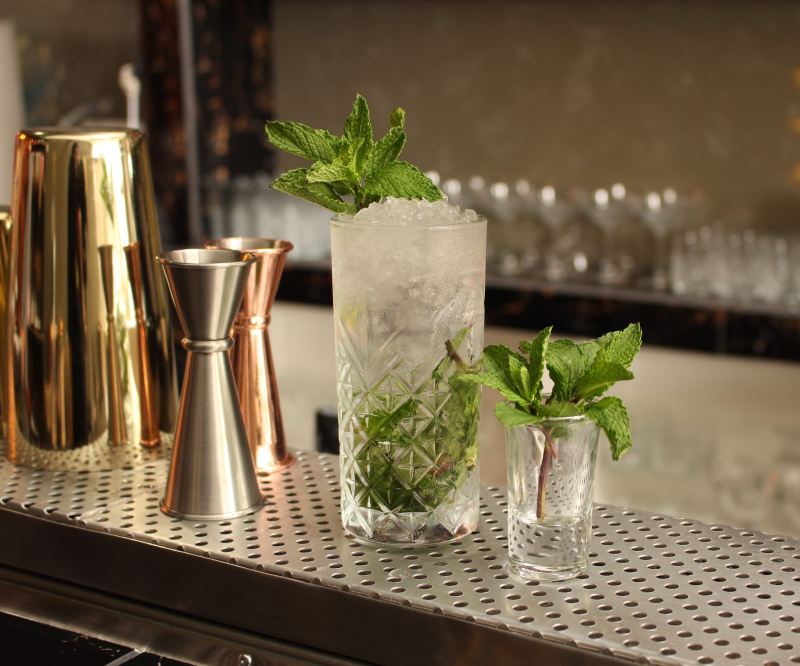
The mojito is a staple summer drink around the world thanks in part to its simplicity (also thanks in part to just how damn tasty it is when made properly). Rum, lime, mint, soda, and sugar is how to make a mojito. You’ve got some tropical power in the rum, a burst of crisp freshness in the mint, a zesty pick-me-up from the lime and the bubbles, and just enough extra sweetness thanks to the sugar — all of which, when put together, make a pretty perfect drink that can be enjoyed at just about any time of the day (especially in tropical climates). What we’re saying is we’re not going to stop you if you decide to make a breakfast mojito while you’re on vacation.
Created in Havana, Cuba, the mojito has gone through waves of popularity in the decades since it first made its appearance (the year is debated, but written sources show its existence as early as the late 1920s). The drink saw a resurgence in popularity in the early 2000s thanks to a certain super spy, Bond, James Bond. Even though Bond is known for his Vespers and martinis, he does drink this potent potable in Die Another Day while on a beach in Cuba.
We did say making a mojito was simple, but you still have to do it right. Don’t worry, we’ve got you covered, keep reading for a great mojito cocktail recipe.
How to make a mojito

The best glass for a mojito is a tall Collins glass, it gives plenty of room for ice, which is vital for a cooling summer cocktail like a mojito. You do need a muddler, a bartender’s tool that is used like a pestle to mash ingredients like fruit in the bottom of a cocktail, it’s a vital tool for mojito making.
Ingredients
- 1 1/2 ounces white rum
- 1 ounce lime juice
- 2 teaspoons white sugar
- 5-7 mint leaves, and 1 sprig for garnish
- Soda water, to fill
Method
- Add mint leaves, lime juice, and sugar to the glass and muddle together.
- Add rum and ice.
- Top with soda water and use a straw to mix.
- Garnish with a sprig of mint and serve.
Want to get fancy? Try a royal mojito

Sometimes, you just want to feel like royalty, and what is a more royal drink than Champagne? But how does Champagne fit in with a mojito, you may ask? Very nicely, as it turns out. Another bonus to this recipe from Difford’s Guide is that it skips the muddling step, instead using fresh lime juice. So,if you want to feel fancy at your next party, whip up a batch of these and pretend you’re wearing a crown.
Ingredients
- 14 fresh mint leaves
- 2 ounces light gold rum
- 1/2 ounce freshly squeezed lime juice
- 1/3 ounce simple syrup
- Brut Champagne or sparkling wine
Method
- Add the mint, rum, lime juice and simple syrup to a Collins glass two-thirds full of crushed ice.
- Stir well with a bar spoon.
- Fill the glass with more crushed ice.
- Top with champagne or sparkling wine and serve.



